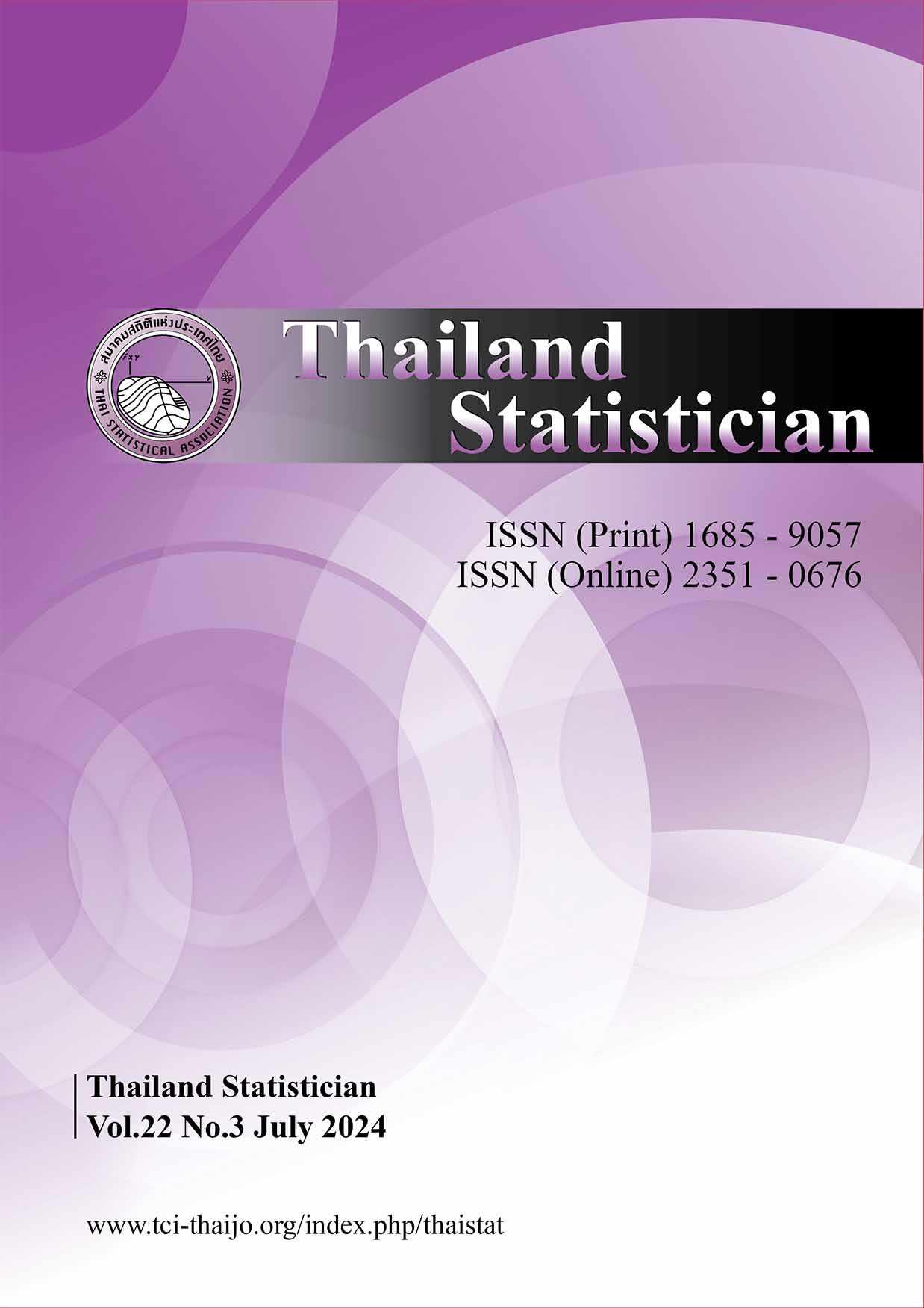New Product Estimators for Population Mean Under Unequal Probability Sampling with Missing Data: A Case Study on the Number of New COVID-19 Patients
Keywords:
Product estimator, COVID-19, nonresponse, reverse framework, unequal probability samplingAbstract
The coronavirus pandemic or COVID-19 has killed numerous human lives and the number of COVID-19 patients all over the world including Thailand has drastically increased. Estimating the incidence of COVID-19 can assist in preventing further impacts through policies and planning for the whole nation. Although some information about COVID-19 are missing. If analysis is conducted without dealing with the issue, imprecise estimations may be made from the data. New product estimators along with the variance estimators for estimating population mean have been introduced under unequal probability sampling without replacement with missing data in the study variable under two nonresponse mechansims; missing completely at random and missing at random. Two frameworks are considered; the two-phase and reverse frameworks to find the variance estimators. Simulation studies and an application to COVID-19 patients investigate the performance of the proposed estimators. The results show that the proposed estimators under the missing at random nonresponse mechanism performs the best with the smallest variance compared to other estimators under both frameworks with the estimated mean of new COVID-19 patients equal to 306 cases per week.
References
Cochran WG. Sampling Techniques. New York: John Wiley & Sons; 1977.
Horvitz DG, Thompson DJ. A generalization of sampling without replacement from a finite universe. J Am Stat Assoc. 1952; 47(260): 663-685.
Midzuno H. On the sampling system with probability proportional to sum of sizes. Ann Inst Stat Math. 1952; 55(3): 99-107.
Ministry of Energy. Thailand solar irradiance data. 2023 [cited 2023 Aug 1]; Available from: http://maps.su.ac.th/solaren/.
Ministry of Plublic Health. Overview information. 2023 [cited 2023 Aug 1]; Available from: http://ddc.moph.go.th/ covid19-dashboard/?dashboard=province.
Murthy MN. Product method of estimation. Sankhya Ser A. 1964; 26(1): 69-74.
National Statistical Office. Demography population and housing branch. 2023 [cited 2023 Aug 1]; Available from: http://statbbi.nso.go.th/staticreport/page/sector/en/01.aspx.
Ponkaew C, Lawson N. A new ratio estimator for population total in the presence of nonresponse under unequal probability sampling without replacement. Thai J Math. 2018(Special Issue); 417-429.
Ponkaew C, Lawson N. Estimating variance in the presence of nonresponse under unequal probability sampling. Suranaree J Sci Tech. 2019; 26(3): 293-302.
Ponkaew C, Lawson N. New estimators for estimating population total: an application to water demand in Thailand under unequal probability sampling without replacement for missing data. Peer J. 2022; 10: e14551.
Ponkaew C, Lawson N. New variance estimators in the presence of nonresponse under unequal probability sampling, with application to fine particulate matter in Thailand. Thail Stat. 2024; 22(1): 76-101.
R Core Team. R: A language and environment for statistical computing. R Foundation for Statistical Computing, Vienna, Austria. 2021 [cited 2023 Sep 6]; Available from: https://www.R-project.org.
Downloads
Published
How to Cite
Issue
Section
License

This work is licensed under a Creative Commons Attribution-NonCommercial-NoDerivatives 4.0 International License.




